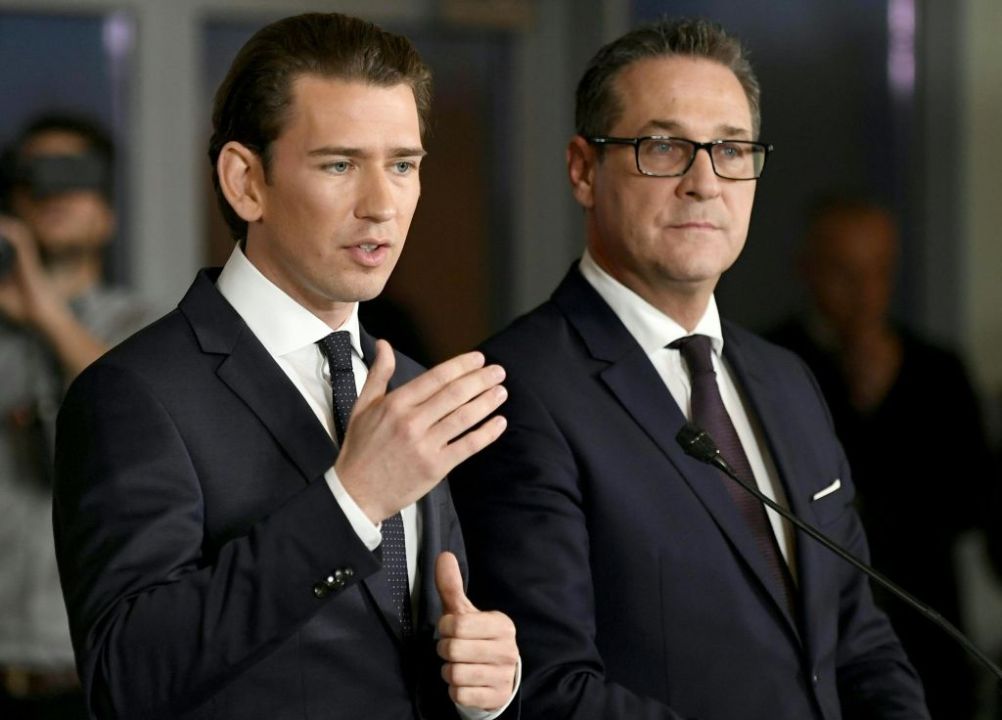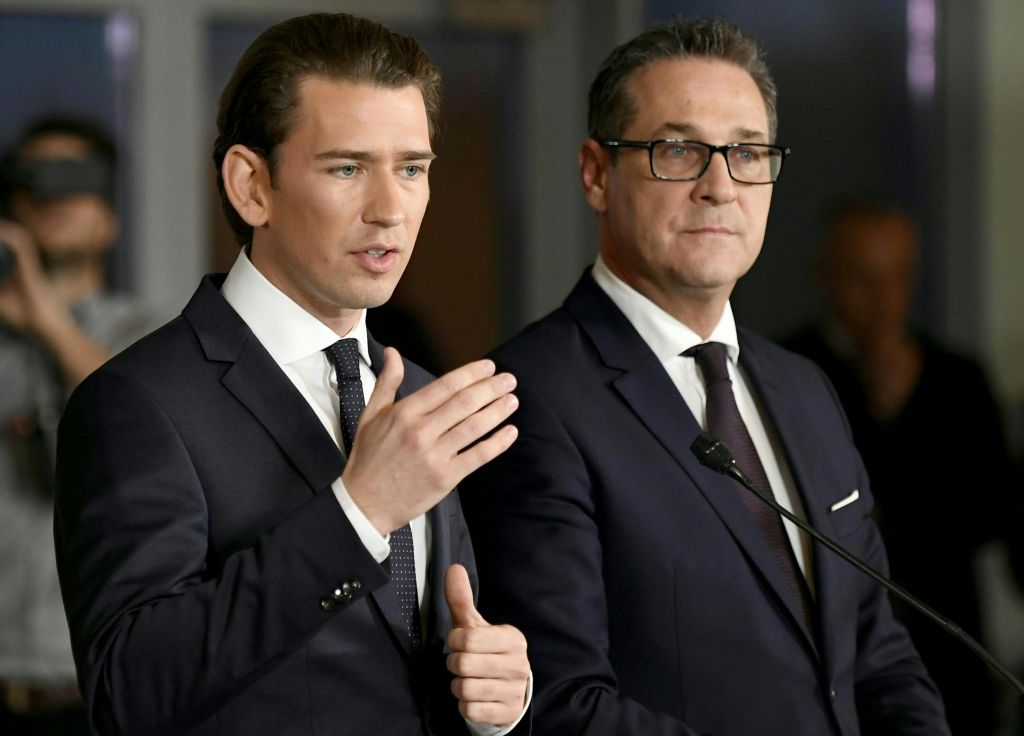Today the world’s youngest leader takes his place at the top table of European politics, as Sebastian Kurz becomes Chancellor of Austria at the age of just 31. However the toasts in Brussels (and Berlin) will be distinctly muted, for Kurz and his centre-right People’s Party have formed a controversial coalition with Austria’s hard-right Freedom Party – a party shunned by centrist parties throughout the EU. It’s a sign that populism is alive and well in Central Europe. So is this new government merely an Austrian anomaly? Or does it mark the advent of a Pan-European trend?
The specifics of this coalition may be peculiarly Austrian, but the generalities reveal a great deal about European politics as a whole. Germans in particular will be peering nervously across the border – curious and anxious to see how this bold political experiment plays out. Until last summer, when Kurz became party leader, his Austrian People’s Party was a paradigm of Europe’s centre-right malaise. The party had been in power since 1986, in a series of coalition governments, usually with Austria’s Social Democrats. These governments were fairly stable, but the two parties cancelled each other out, leading to inertia. Dissatisfied voters had nowhere to go, except to the extremes of left or right.
The main beneficiaries of this disillusionment have been Austria’s Freedom Party. Last summer it looked as if they might even win October’s election outright. They were leading in the polls, and the ruling People’s Party was languishing in third place. After Kurz took over, in just five months he took them from third to first. How did Kurz achieve this turnaround? By taking his party to the right, especially regarding immigration. The Social Democrats accused him of stealing the Freedom Party’s clothes, and Freedom Party leader Heinz-Christian Strache called him ‘an imposter’. Yet electorally, if nothing else, Kurz’s new strategy was inspired. His People’s Party didn’t win enough votes to govern alone (that’s only happened once, back in 1966, 20 years before he was born) but they emerged as the biggest party – something that seemed inconceivable before Kurz took charge.
In previous hung parliaments, the result would have been yet another Grand Coalition, but after fighting such a resolutely right wing campaign, for Kurz to get back into bed with the Social Democrats would have caused outrage on both left and right. Instead, he’s played for high stakes, and formed a coalition with the despised and derided Freedom Party, condemned as ‘Nazis’ by thousands of protestors as they took office today.
For Kurz, and Austria, this coalition is a huge gamble. If he succeeds, he could bust the cosy consensus of Austrian politics wide open, and reenergise a political system that’s been mired in compromise and stasis. If he fails, he’ll be remembered as the wunderkind who supped with the devil with too short a spoon. The Freedom Party has six ministers in the new government. It controls the foreign ministry and its leader, Heinz-Christian Strache, is the new vice chancellor. Will Kurz tame his new bedfellows? Or will they hog the duvet, and eventually kick him out of bed?
Intriguingly, this isn’t the first time the People’s Party have formed a coalition with the Freedom Party. The two parties ruled together from 2002 to 2006, and this alliance only fell apart when charismatic Freedom Party leader Jörg Haider left to form his own party. If he hadn’t died in a car crash in 2008, Austrian politics might look very different today.
Last time these two parties got together, the reaction from the rest of Europe was dramatic. For a while, the EU even broke off some diplomatic relations with Austria. This time around, the reaction is bound to be more subdued. In 2002, the Freedom Party was dismissed as a Teutonic freak – an anachronistic aberration. Fifteen years later, the political landscape is very different. Today, it’s the other parties that seem to be behind the times.
The progress of this coalition will be examined closely throughout Europe, and nowhere more so than in Germany, which has a populist problem of its own. In Germany, the response of the status quo (so far) could hardly be more different. All the German politicians I’ve spoken to, on the centre left and the centre right, say their strategy (if you can call it that) for dealing with the rise of Alternative für Deutschland is to wait for this anti-immigration party to tear itself apart. Given the calibre of AfD’s politicians, this may well happen – but what will then become of the millions of Germans (one in eight) who voted for them? They won’t disappear, even if AfD self-destructs. Without a parliamentary party, where will they go next?
Conversely, by cooperating with the Freedom Party, Kurz is aiming to normalise them, instead of ostracising them. And although it’s still early days, his plan seems to be working – so far. The two parties have agreed a joint policy on immigration, toughening up existing legislation. In exchange, the europhobic Freedom Party has bowed to the (relatively) europhile People’s Party, and has affirmed its commitment to the EU.
Can conservatives work with populists, and deliver policies that satisfy both sets of supporters? Nobody really knows, but Austria is about to find out. Kurz may succeed or fail, but at least he’s trying something different. Either way, it seems like a much better plan than simply ignoring those pesky populists, and hoping they’ll somehow go away.







Comments